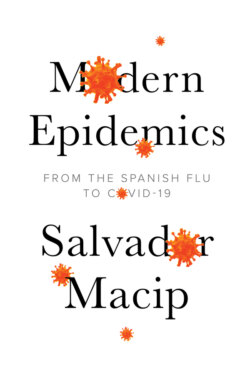Читать книгу Modern Epidemics - Salvador Macip - Страница 36
Titbits: famous people with polio
ОглавлениеHere are some of the famous people who suffered from poliomyelitis. Many of them survived without visible sequelae:
Alan Alda
Francis Ford Coppola
Donovan
Mia Farrow
Frida Kahlo
Joni Mitchell
Doc Pomus
Donald Sutherland
Arthur C. Clarke
Joe Dante
Ian Dury
Mel Ferrer
Jack Niklaus
Itzhak Perlman
Walter Scott
Neil Young
The most famous polio patient in history, the president of the United States, Franklin D. Roosevelt, was most probably confined to a wheelchair because of another disorder, the Guillain-Barré Syndrome.
This happens because the vaccine that is presently being used is the so-called OPV (oral polio vaccine), the one discovered by Sabin. It is very effective. The problem is that it’s made from attenuated viruses and it’s known that, in some cases, they revert to their active form, recover their aggressiveness and cause spontaneous outbreaks. Although it is relatively rare (seen in just one case among almost 8 million vaccinated people), this is precisely what occurred in 2005 with the vaccine against the type 2 virus. In 2009, there were 124 cases of paralysis in Nigeria caused by this vaccine.
Some critics believe that, because of this potential danger, polio will never be wholly eradicated as long as the OPV vaccine is being administered. Hence, in developed countries, another vaccine is used, namely the IPV vaccine discovered by Salk, which is made from a form of the virus that is unable to reactivate. IPV is more expensive and dangerous to produce (and made only in places where security measures are of a high standard) and, moreover, it must be injected, which means it’s less appropriate in poor countries. Scientists are still looking for an improved vaccine that would combine the best features of both OPV and IPV.
The main reason that polio is still around is the difficulty of vaccinating the entire population. In Nigeria, for example, the vaccination of children in the Islamic states of the north was halted for a while because of a rumour that the vaccine caused both infertility in women and AIDS. The most conservative religious leaders recommended that the population should not be vaccinated, and the upshot was that there were major outbreaks of polio in the country, after which the virus spread, first to neighbouring states, and then to twenty other countries that had already eliminated the disease, some of them as far away as Indonesia. Nigeria itself accounted for more than half the world’s new cases of poliomyelitis.
However, in September 2020 it was announced that Africa was finally free of the polio virus (the wild version: there are still vaccine-derived cases, as described above). The last case of the disease on the continent was recorded in Nigeria in 2016. While science provided an effective vaccine that eliminated polio in most countries, clearing the African continent of the virus is actually a triumph of thousands of health and social workers and campaigners who have fought tirelessly over the years to ensure that the vaccination programmes worked, despite all the obstacles. Without their commitment, this would have never been possible.
But polio still exists in the world. It remains in Afghanistan and Pakistan, where the vaccines didn’t reach war-torn zones to which neither the UN nor the WHO had access. In Pakistan, extremist leaders have proclaimed fatwas against vaccinators, claiming that the vaccine isn’t safe. In India, the problems are mainly overcrowding and poor hygiene, which facilitates transmission of the virus. Until these obstacles are overcome, total eradication of polio won’t be feasible.
